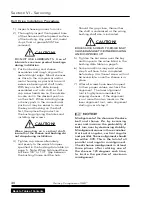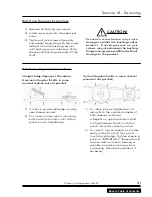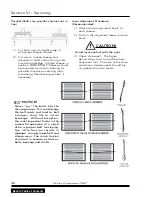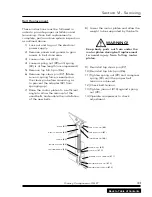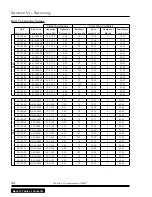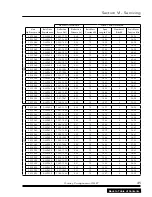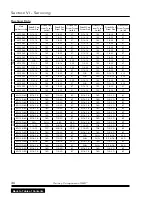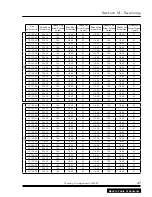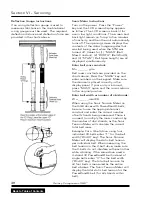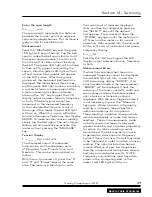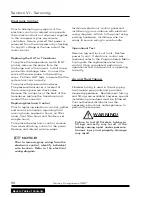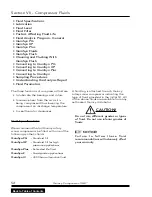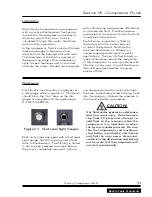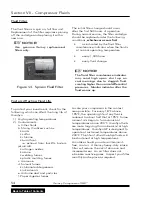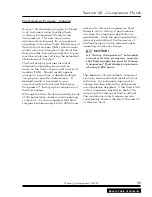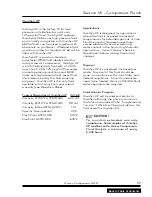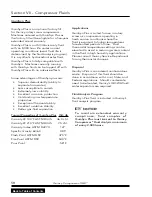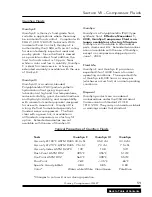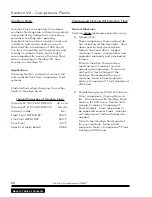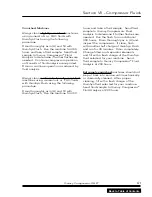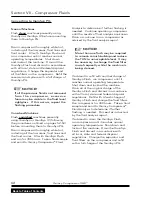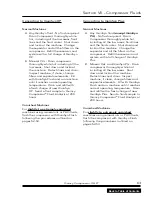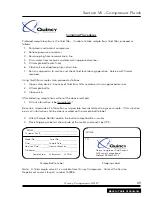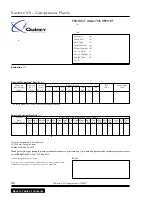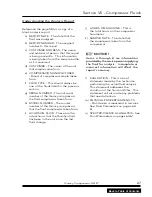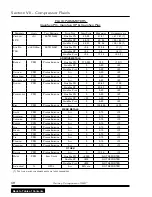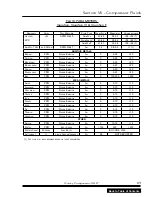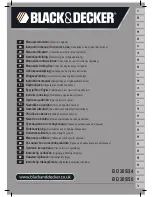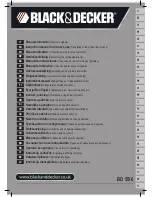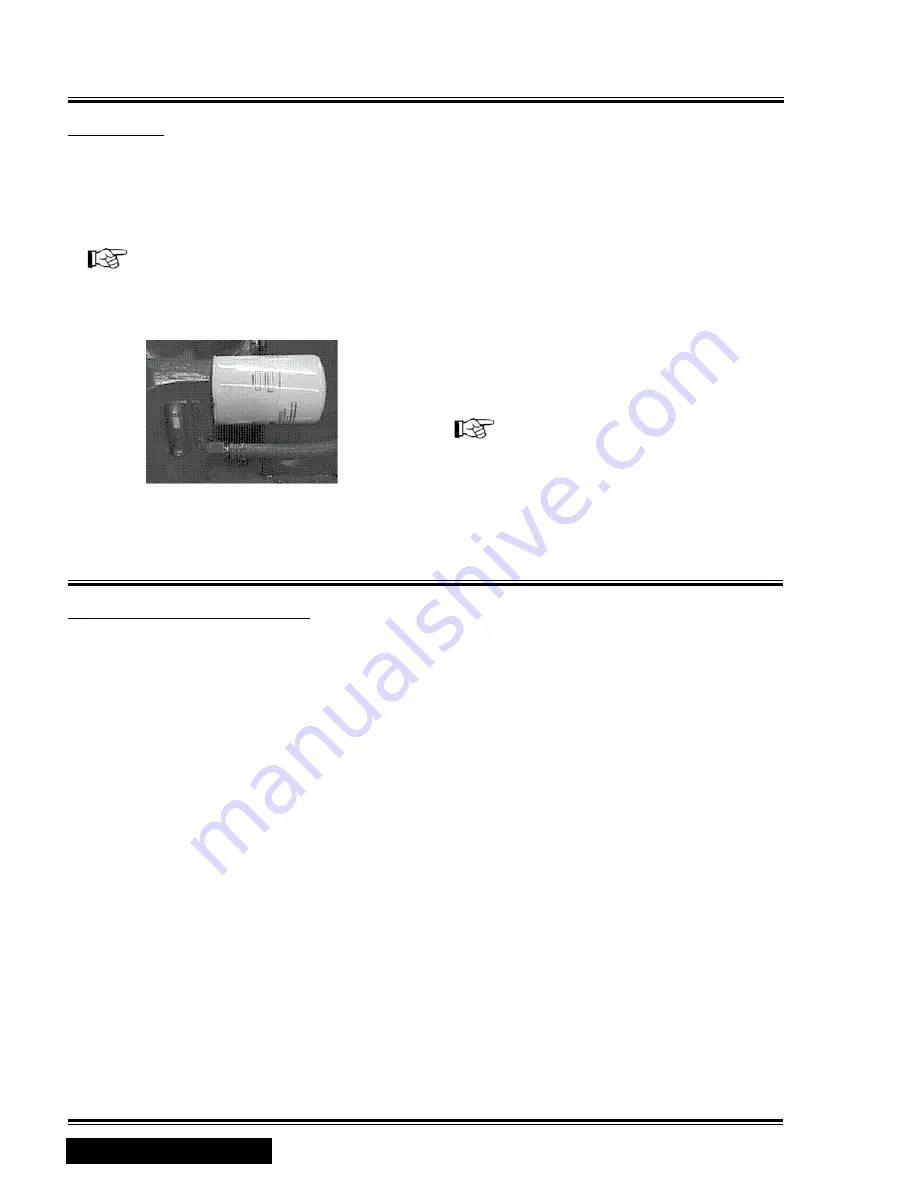
Section VII - Compressor Fluids
Fluid Filter
The fluid filter is a spin on, full flow unit.
Replacement of the filter requires spinning
off the cartridge and replacing it with a
new one.
notiCe!
Use genuine Quincy replacement
filters only.
Figure 1-3. Spin-on Fluid Filter
The initial filter change should occur
after the first 500 hours of operation.
During normal service, the filter cartridge
should be replaced under the following
conditions,
whichever occurs first
:
•
as indicated by the fluid filter
maintenance indicator when the fluid is
at normal operating temperature
•
every ,000 hours
•
every fluid change
notiCe!
The fluid filter maintenance indicator
may read high upon start up on
cool mornings due to sluggish fluid
creating higher than normal differential
pressures. Monitor indicator after the
fluid warms up.
Factors Affecting Fluid Life
To protect your investment, check for the
following, which can affect the long life of
QuinSyn:
) High operating temperatures
2) Contaminants:
a. Other fluids
b. Strong Oxidizers such as:
• acids
• sulfur
• chlorine
• burnt fuel -
i.e. exhaust from: forklifts, boilers,
jet aircraft
• nitrogen oxides
• ozone
• welding fumes
• plastic molding fumes
c. Ammonia
d. Solvent fumes:
• chlorinated degreasers
• ink solvents
e. Airborne dust and particles
f. Paper digester fumes
Locate your compressor in the coolest
area possible. For every 8°F above
95°F, the operating life of any fluid is
reduced to about half that at 95°F. Some
mineral oils begin to form varnish at
temperatures above 200°F. QuinSyn fluids
are more forgiving than mineral oil at high
temperatures. QuinSyn XP is designed to
operate at sustained temperatures above
200°F. The life of other QuinSyn fluids will
be shortened at high temperatures.
Air intake should provide contaminant-
free, cool air. A Quincy heavy-duty intake
filter will reduce the risk of abrasion and
increased wear. An air filter does not
eliminate reactive gases. Inspect your filter
monthly and replace as required.
54
Quincy Compressor-QGB
™
Back to Table of Contents

